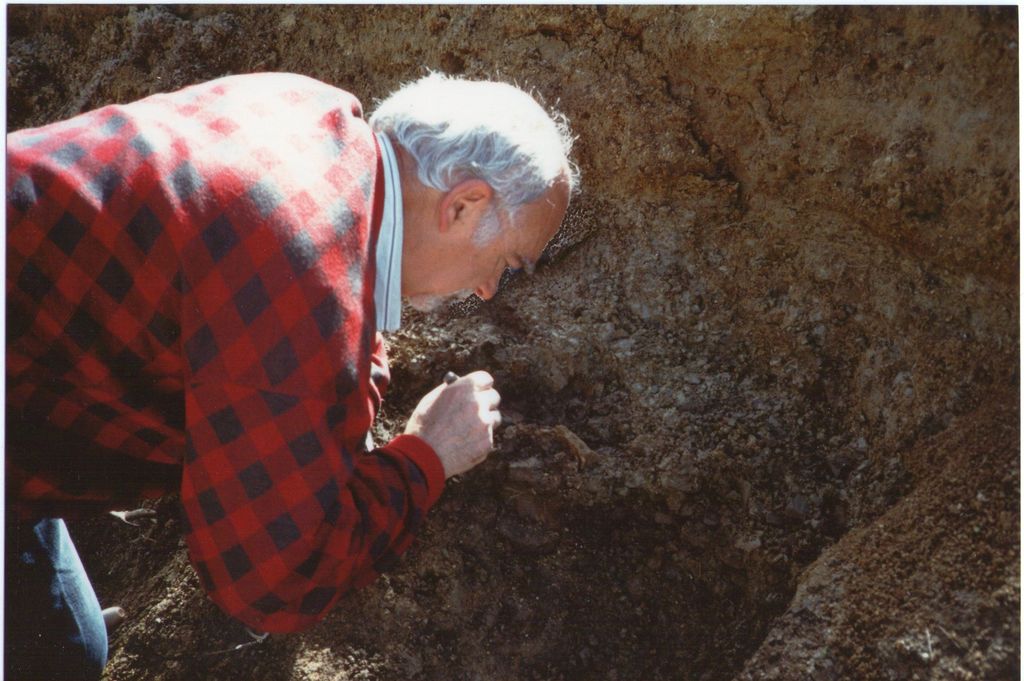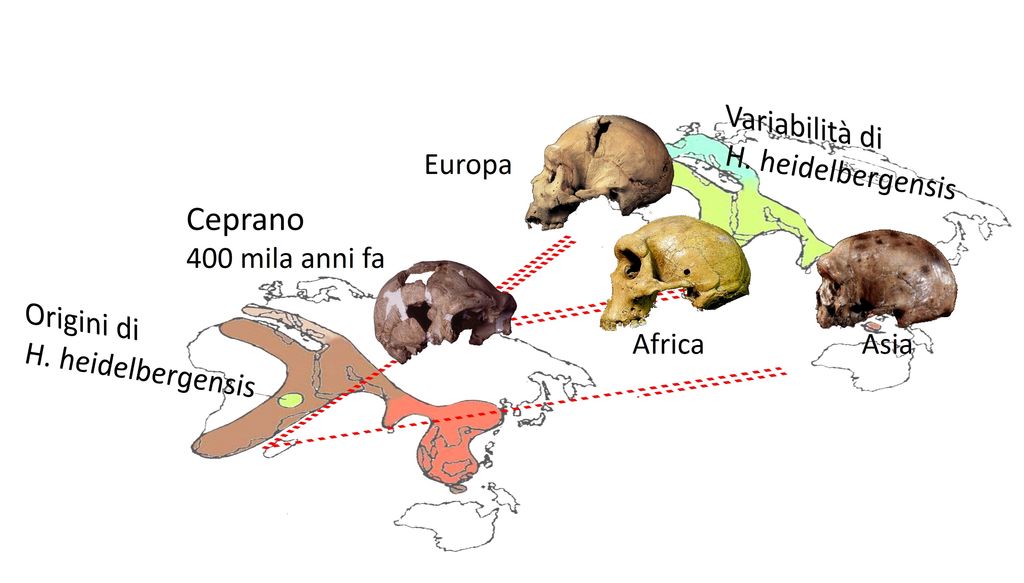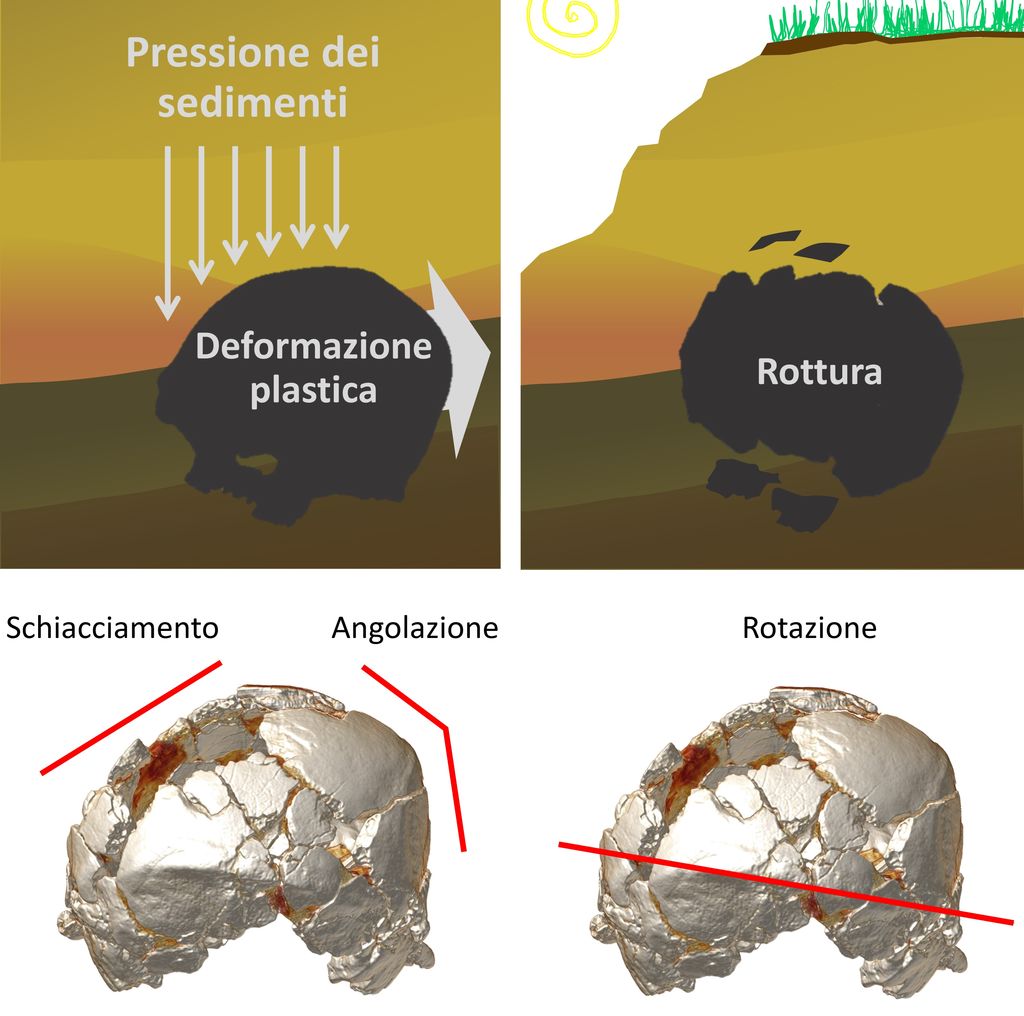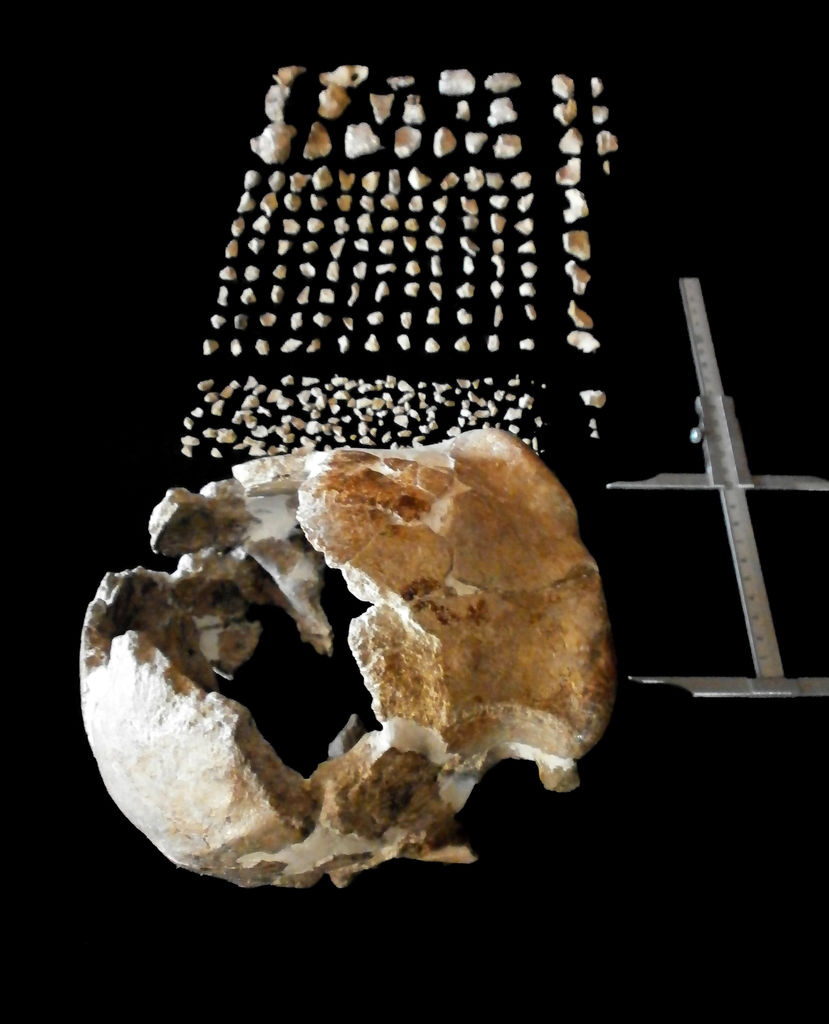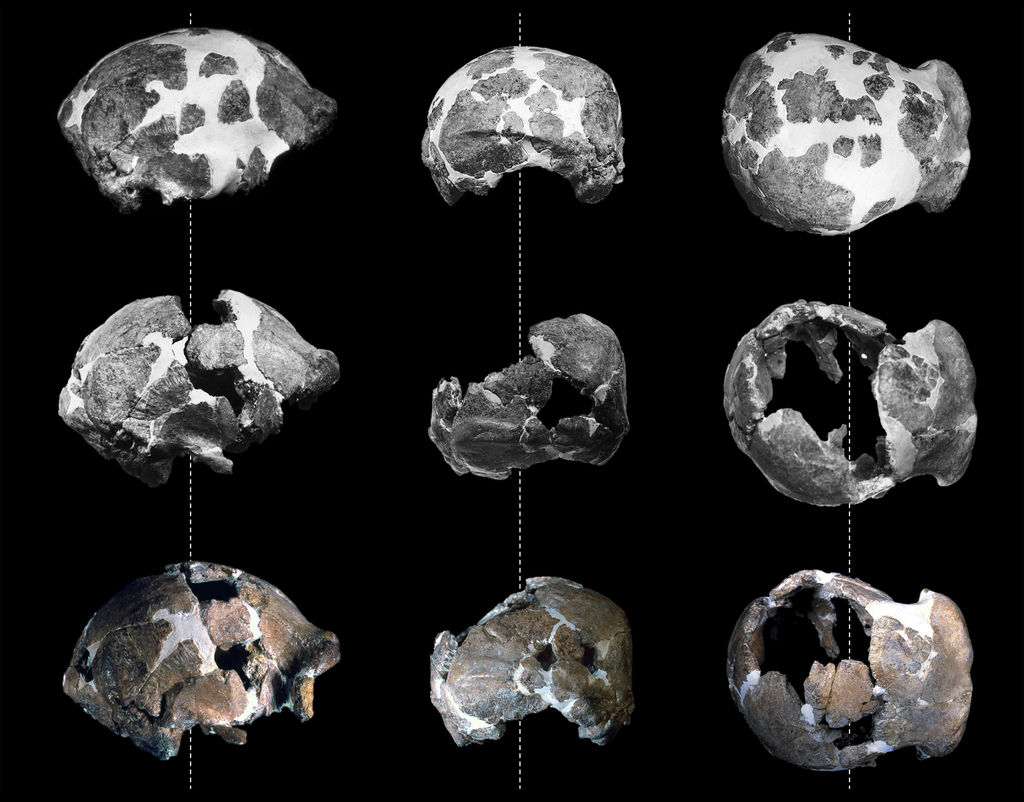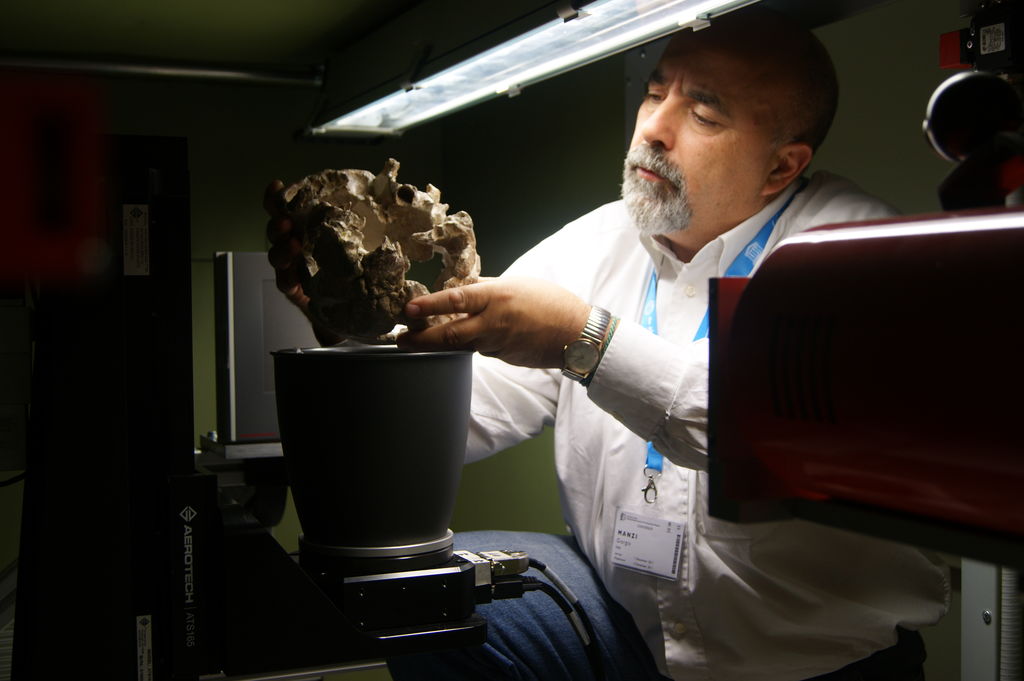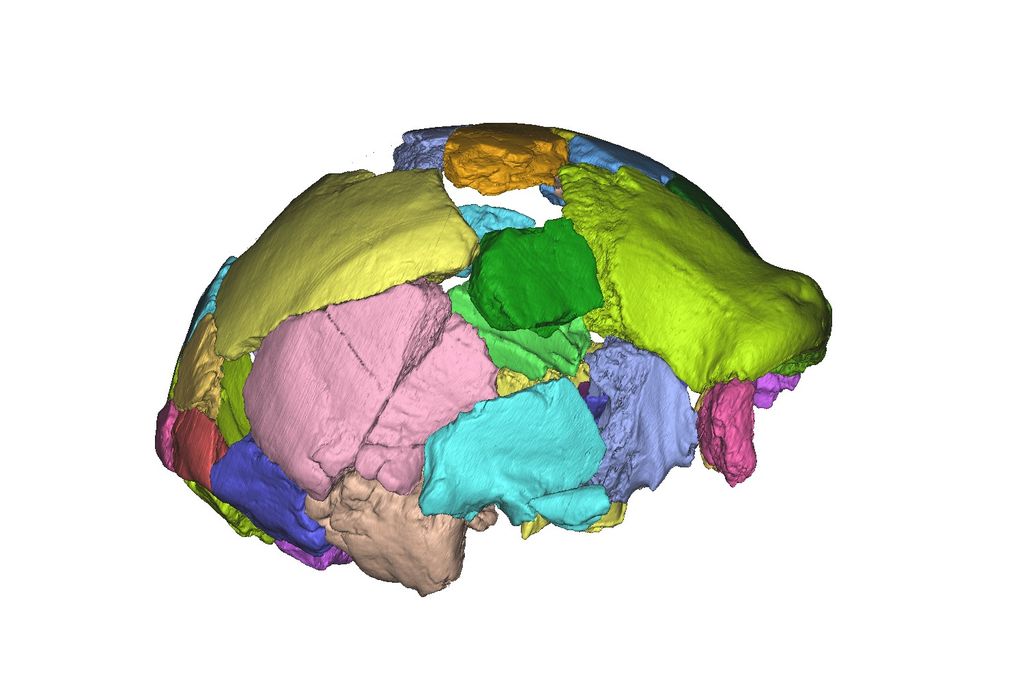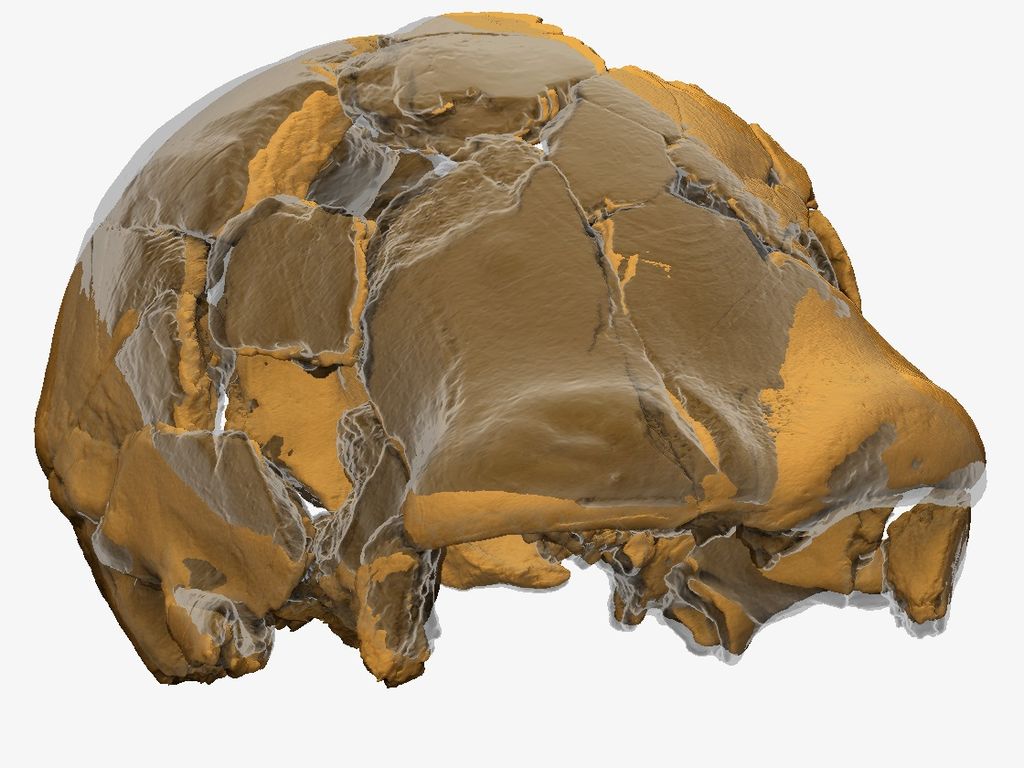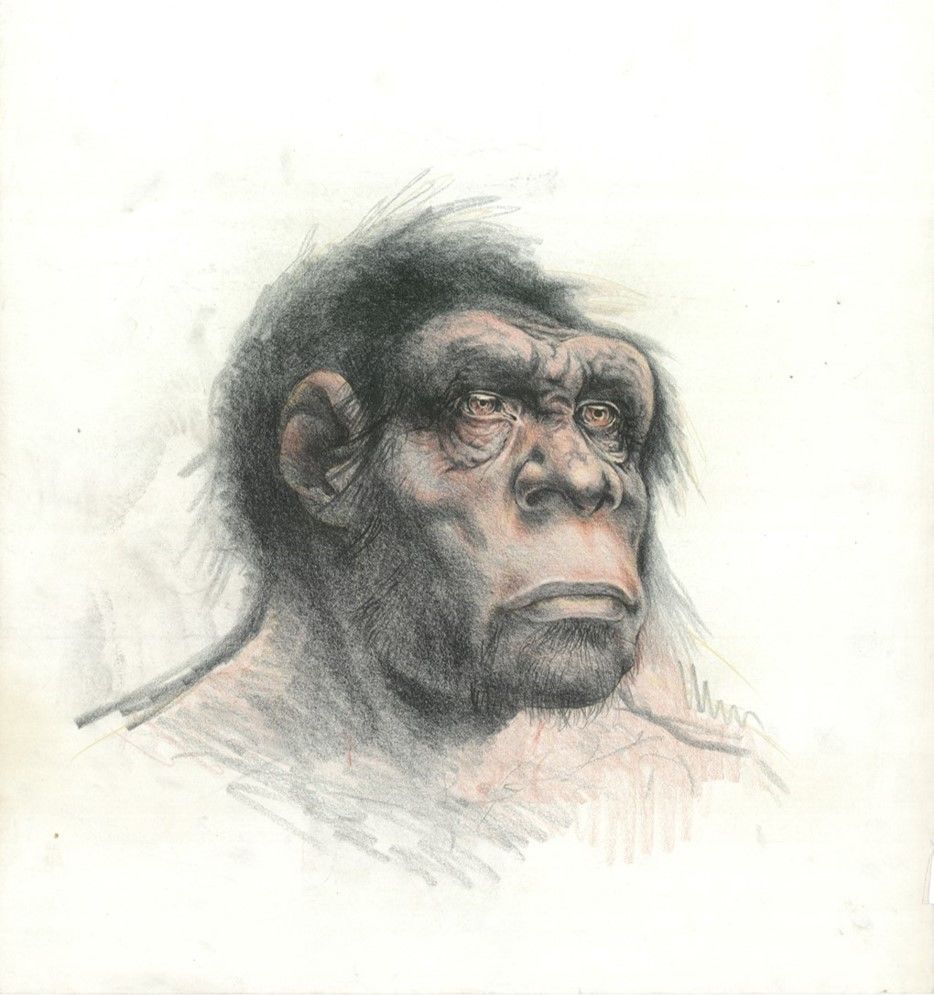
Ceprano: the last common ancestor
A new study published on Scientific Reports describes the digital restoration of the fossil, badly deformed during the early phases of fossilization, aimed at recovering its original cranial morphology. The specimen eventually turned out to be more similar to other fossil representatives of the extinct species that was ancestral to Neanderthals and modern humans: i.e., Homo heidelbergensis.
The study has been coordinated by Giorgio Manzi of the Department of Environmental Biology of Sapienza University of Rome and director of the Polo museale Sapienza, in collaboration with several other researchers and with the Soprintendenza archeologia, belle arti e paesaggio di Roma, Viterbo ed Etruria meridionale.Soon after the discovery, the Ceprano calvarium was restored using the original fragments and a large amount of plaster. This procedure has made difficult any further modification in the arrangement of the fragments, contributing to leave unclear for years the taxonomic interpretation of the specimen.
In the new research a digital approach was used, based on high-resolution computer micro-tomographic acquisition made at the International Center of Theoretical Physics "Abdus Salam" in Trieste. This allowed the "digital cleaning" from the plaster (impossible to remove by mechanical or chemical means) and the virtual separation of the fragments. These were then repositioned accurately, correcting the defects found in the previous reconstructions.
The taphonomic processes responsible for the plastic deformation of the calvarium were also investigated.
This preliminary examination allowed the application of a new algorithm for the symmetrisation, which retrodeformed the specimen to its probable original morphology. The result of this sophisticated approach is a morphology of the Ceprano skull cap that finds great similarities to other representatives of Homo heidelbergensis, which paleoanthropological and paleogeographic data indicate as the last common ancestor between Neanderthals and ourselves.
Fabio Di Vincenzo – the first author of the research – says "working on a find of such scientific importance has been like seizing an impossible challenge launched directly from the deepest past of our evolutionary history". Antonio Profico, another author of the research, adds: "The importance of this study is also in the development of an innovative digital restoration methodology, that can be used also in other controversial case-studies of human evolution.
References:
Fabio Di Vincenzo, Antonio Profico, Federico Bernardini, Vittorio Cerroni, Diego Dreossi, Stefan Schlager, Paola Zaio, Stefano Benazzi, Italo Biddittu, Mauro Rubini, Claudio Tuniz & Giorgio Manzi - Digital reconstruction of the Ceprano calvarium (Italy), and implications for its interpretation - Scientific Reports 7, Article number: 13974 25 Ottobre 2017 doi:10.1038/s41598-017-14437-2
